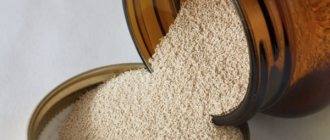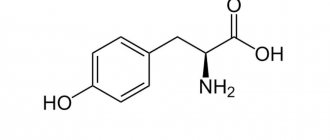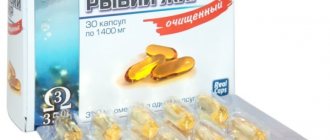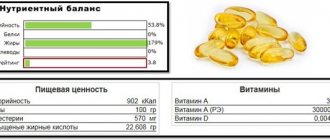Mildronate is the so-called trade name; the substance used is called meldonium. It was first discovered in the 70s and for a long time it was not used in the medical field, limited to its use as a supplement to accelerate growth in agriculture. However, after a while, the substance became widespread in medicine in the form of a drug that affects the metabolism in the body and a cardioprotective drug. Doctors began to actively prescribe meldonium to patients with heart problems, and at the same time, athletes began to pay attention to meldonium. The drug Mildronate began to be used literally everywhere in sports, as it ensured good recovery of the body after hard training by athletes.
Compound
The lion's share of the internal content of the drug is meldonium, an active substance derived by scientists as an analogue of gamma butyrobetaine (which is independently synthesized by the body's cells). A synthetic substance of this kind has properties similar to those of a B vitamin.
The drug is used as:
- angioprotector;
- cardioprotector;
- antihypocanalosant.
Action of Mildronate
The action of meldonium is based on the normalization of metabolic processes in the human body:
- inhibition of carnitine production, due to which the processes of fatty acid oxidation are inhibited;
- normalization of physiological cellular processes;
- increased synthesis of gamma butyrobetaine, due to which there is a decrease in vascular spasm and an increase in the rate of their cleansing from oxides;
- providing oxygen to all tissues and cells of the body;
- organization of glucose oxidation, due to which the energy costs of cells are reduced;
- reducing the likelihood of cell accumulation of free radicals;
- increasing the contractility of the heart muscle.
Mildronate has the following effect on humans:
- Increasing the overall endurance of the body.
- Increased performance.
- Increased level of tissue immunity.
- Reducing the load on the heart muscle.
What is it used for?
Let's look at this in more detail. The main principle of the drug’s action is based on improving the oxygen supply to the body. Soldiers during the war in Afghanistan used Mildronate in mountainous areas to increase endurance in thin air conditions. Today it is banned in the United States and many other countries.
In medicine, it is prescribed to patients to improve blood supply to certain parts of the body, as well as to treat coronary vascular diseases and prevent heart attack. Scientific studies prove the effectiveness of this drug in the treatment of chronic heart failure and stroke. In a number of countries, Mildronate is used to improve cerebral blood supply. It has been proven that the drug helps improve motor functions, eliminates nausea and dizziness, and also improves mood.
"Mildronat" is also prescribed for:
- injuries to the organs of vision;
- respiratory tract infections;
- stomach ulcer.
The instructions for use of the drug contain the following wording: “improving mental activity and physical performance.” At the same time, there is also a disclaimer that the medication does not affect athletic performance, which is absolutely not true. The action of many doping drugs is based on the same principle. WADA prohibits Mildronate for athletes because it may increase performance by providing oxygen to the muscles and cardiovascular system.
Mildronate gained its greatest popularity in sports thanks to doping scandals. In addition to the Russian tennis player, figure skater Ekaterina Bobrova, champion runner Abeba Aregawi, and marathon runner Endeshaw Negesse also admitted to taking this drug. Representatives from Russia, Germany, Sweden, Ukraine and Ethiopia were caught using the drug at different times. Approximately 17% of athletes use Mildronate. The latest confirmation of the recognition of the doping industry was the ban on the participation of Russian athletes at the Olympics.
According to the WADA classification, meldonium is classified as a metabolic modulator.
The substance was included in the list of prohibited doping drugs because it meets the following criteria:
- threatens the health of athletes;
- destroys the spirit of competition;
- improves athletic performance.
The athlete taking this drug receives an advantage. Meldonium helps improve endurance and speed of recovery after training, stimulates the functions of the central nervous system, and also provides the body with anti-stress protection.
Efficacy of Mildronate
Mildronate works effectively not only for athletes, but also for ordinary people, both older and younger, the main thing is to decide how to take it correctly. The effectiveness of the drug is confirmed by numerous clinical studies.
Regular and correct intake of meldonium allows you to achieve the following positive effects:
- accelerate muscle recovery after exercise;
- increase the degree of removal of toxins from the body;
- accelerate cellular and tissue regeneration;
- relieve symptoms of physical fatigue;
- increase muscle tone of the body;
- normalize blood circulation in organs and tissues;
- speed up metabolic processes;
- reduce cholesterol;
- accelerate weight loss by increasing metabolic rates.
Contraindications
Meldonium does not have a large list of contraindications, which increases the accessibility of its use.
Taking the drug is prohibited only in certain cases:
- for women in pregnancy , due to the lack of sufficient clinical studies of the effect of this drug on the female body and fetus during this period;
- during lactation : scientists have not proven the possibility of meldonium penetrating into breast milk, but to avoid potential harm to the baby, it is better not to take the drug;
- if there is an individual intolerance to one or more substances included in the drug;
- patients with high intracranial pressure and tumor processes of various locations;
- for use by children under 12 years of age (due to lack of proper research);
- when taken simultaneously with nitroglycerin and adrenergic blockers, due to the possibility of a sharp decrease in blood pressure and an increase in heart rate;
- in patients with chronic diseases of the liver and genitourinary system, with edema arising for an unknown reason.
The instructions for mildronate indicate how to take it for athletes; it also describes some restrictions:
- taking the drug in the first half of the day to avoid the development of insomnia or the appearance of an overexcited state;
- meldonium is administered only intravenously or taken in capsule form, but not by intramuscular administration;
- For elderly people, the drug is prescribed according to strict indications, in a slightly lower dosage than for other categories of patients (administration should be carried out under strict medical supervision).
How Mildronate will help you lose weight
Mildronate is not a drug for weight loss; it is most often taken in capsules to increase exercise tolerance. The beneficial properties are also associated with protecting the heart, but the downside is the risk of adverse reactions and a weak effect specifically on weight loss.
Advantages and disadvantages
The advantages of Mildronate include:
- good tolerance;
- minimum contraindications;
- positive effect on vital organs - heart and brain;
- studied pharmacological effect;
- proven effectiveness in oxygen deprivation;
- Possibility of use in old age;
- is a medicinal product, not a dietary supplement.
Cons of Mildronate for weight loss:
- does not burn fat on its own;
- does not help without a significant increase in physical activity and calorie restriction;
- will additionally provide a weight loss not exceeding 3 kg per year;
- There are adverse reactions in the form of headaches and dizziness, allergies, and pressure changes.
We recommend reading the article about Bromelain for weight loss. From the article you will learn about the benefits and harms of the drug, which diet pills you can find it in, and whether you should drink it to lose weight. And here is more information about how L-carnitine will help you lose weight.
Beneficial features
The most important property of Mildronate, which is used in medicine, is the protection of heart cells. It manifests itself with increased load on the heart muscle. Therefore, the drug is classified as a cardioprotector. It is precisely this effect that is associated with the use of the drug by athletes. In a simplified way, it can be represented this way: Mildronate prevents the heart from weakening during tachycardia, that is, when contractions are too frequent. They can be for various reasons:
- exercise stress;
- stress;
- drinking alcohol;
- increased thyroid function;
- narrowing of the coronary vessels (angina);
- high blood pressure;
- diabetes.
Mechanism of action of Mildronate
The drug also has extracardiac effects:
- improves mental activity;
- increases exercise tolerance;
- protects brain cells from the effects of stress;
- reduces blood viscosity and cholesterol levels;
- reduces the permeability of blood vessels in the fundus, restores vision in case of vascular diseases;
- facilitates the course of withdrawal syndrome (cessation of drinking alcohol) in alcoholism;
- activates immune defense.
Watch this video about the mechanism of action of Mildronate:
The effect of Mildronate on the body
The effect of Mildronate on the body is based on the fact that it switches the path of energy production from fat oxidation to glucose, which allows not so much oxygen to be wasted. That is, it transfers metabolic processes to an economical mode. At the same time, less under-oxidized fatty acids are formed, which destroy blood vessels, heart cells, and brain cells.
A very important feature of the drug is that it does not directly increase either the metabolic rate or the burning of fat, but only helps the body work effectively in the absence of oxygen. This explains the fact that a healthy young person with normal blood circulation in the heart and brain does not benefit from Mildronate for weight loss. It will not help without a significant increase in physical activity.
The only situation where Mildronate can be included in a weight loss program is when a person with the lowest level of physical fitness has started going to the gym regularly and is working out too hard. Then the drug will protect the heart and muscular system from overload. In this way, it will be possible to quickly burn calories, and if the diet contains less of them, the process of losing weight will begin.
Who is Mildronate really indicated for?
There are medical indications for using the drug:
- overexertion in athletes during intense training or competition;
- rapid fatigue after illnesses, injuries, operations;
- heart pain due to angina pectoris, menopausal syndrome;
- rehabilitation period after myocardial infarction, stroke;
- treatment of alcoholism (in combination with other methods of therapy);
- disturbance of blood flow in the retina of the eye - hemorrhage, thrombosis, changes in the fundus of the eye with hypertension, diabetes mellitus (retinopathy).
Application in sports
Mildronate has been actively used among athletes since the 70s of the 20th century, but in 2020 it was declared a prohibited drug among professional sports.
Mildronate for athletes will help maintain heart tone and make it easier to endure heavy physical activity.
Athletes actively use this drug because of its following properties:
- improvement of cellular metabolism, due to which decay products are instantly removed from cells;
- accelerated recovery of energy after tested physical activity;
- increasing the overall endurance of the body.
Athletes prefer intravenous administration of the drug, due to the accelerated achievement of the expected effect compared to taking meldonium capsules.
Don't miss the most popular article in the section: Body drying for girls. Training program, detailed nutrition menu for the month by day.
Switching to carbohydrate oxidation leads to a decrease in cell energy costs
From the practice of strength training, we know well that for more productive work it is necessary to provide yourself with carbohydrates. The banal consumption of rice or buckwheat is an integral recommendation in strength training programs. But the discussion in the energy supply of strength training lies in the context of glycolysis, as a more energy-intensive process of supplying muscles with ATP molecules, while there is a by-product - lactic acid and cell acidification. This state of affairs will not contribute to “optimizing” the work of the heart. This is important to understand here. We are talking about energy generation precisely with the presence of OXYGEN. Those. The essence of the optimization concept here is that the oxidation of carbohydrates has a higher efficiency than the oxidation of fats. This is not entirely clear and obvious, because in a state of rest, the most optimal process of energy formation is fat oxidation. If there is enough oxygen, then we “live” on fat. About 60-70% (Lee Know, 2020) of the cell’s energy is produced by fat oxidation; for the heart this figure can be 80% (I. Kalvins, 2006) [4]. During the oxidation of fats, there are no acidification products such as lactic and/or pyruvic acid, which appear during the metabolism of carbohydrates. Therefore, the main question here is how can you switch from rational energy supply to fats and get a “health-improving” effect from working on carbohydrates?
It turns out that, indeed, the oxidation of carbohydrates has a higher efficiency than the oxidation of fats. In particular, sports biochemistry [1] tells us this difference is 12%. In order to understand at a glance how this happens, let’s look at the basic formulas for the oxidation of glucose and the oxidation of fatty acid (palmitic acid), take a comparable amount of oxygen used and see how many ATP molecules are obtained in the first and second cases.
FORMULA for GLUCOSE oxidation. C6H12O6 + 6O2 à 6CO2 + 42H2O + 36ATP
So, a glucose molecule C6H12O6 requires 6 molecules of oxygen (6O2) for its oxidation. As a result, 6 molecules of carbon dioxide (6CO2) and 42 molecules of water (42H2O) are released, while 36 ATP molecules are formed (34 in oxidation + 2 ATP from glycolysis) [1]
FORMULA for oxidation of PALMITIC FA. С16Н32О2 + 23О2 à 16СО2 + 146Н2О + 130ATP
Those. in order to oxidize palmitic fatty acid, 23 oxygen molecules are needed and the output is 130 ATP with the release of 16 CO2 molecules and 146 water molecules.
In order to compare the two proposed oxidation options, we will bring them to approximately identical oxygen, taking the process of glucose oxidation 4 times. (I propose this particular option, so as not to complicate the comparison with more cumbersome formulas) Thus. for the oxidation of 4 glucose molecules we need 24 O2 molecules, which is approximately the same as what is needed for the oxidation of palmitic FA (23 O2). Then from the oxidation of 4 glucose molecules we get 144 ATP (36 * 4), which is, indeed, more than 130, which are formed during the oxidation of fatty acids. This difference is approximately 12%, which is what “Sports Biochemistry” declares to us. [1]
That is, to the question of how glucose oxidation will be more cost-effective in relation to fat oxidation, we can assume that there is an answer. Yes, indeed, when switching from one substrate to another, the power of the ATP formation process will increase. The figure for this increase is 12% percent, although other authors (E.B. Myakinchenko, V.N. Seluyanov, 2009) [2] also give a more significant difference in this comparison, saying that fat oxidation is only 60% of the oxidation power glucose. Be that as it may, the recommendation of carbohydrate supplementation when performing long-term physical activity is classic and confirmed in sports practice.
Use for weight loss
When considering the drug Mildronate for athletes and how to take it, it is worth remembering that it is also indicated for those who want to lose weight.
The action of the drug, in this case, occurs as follows:
- metabolic processes in the body are significantly accelerated;
- performance increases when exercising in a gym or gym;
- the body's adaptive ability to physical activity increases.
Weight loss by taking Mildronate can be not so much accelerated as facilitated. This happens by increasing the overall endurance of the body (which is very important when working in the gym) and increasing the rate of calorie breakdown. Meldonium works like its analogue, carnitine.
Reviews
"Mildronat" for athletes shows high efficiency. The person becomes more dexterous, the speed of movements increases. Another significant advantage of this substance is the improvement of thinking and memory. According to many athletes, Mildronate allows you to rationally use the body's resources, and also increases performance in extreme conditions. In addition, the drug under discussion is especially popular among athletes involved in aerobic sports.
Directions for use and dosage
Mildronate can be taken both in capsule form and by intravenous injection. Some prefer intramuscular administration, but it does not provide the level of effectiveness that is achieved by the first two methods of administration.
The dosage and administration of the drug differs depending on the indication for which the drug is prescribed:
- To combat cardiovascular diseases, meldonium is taken orally in a dosage of 250 mg. The reception lasts for 4 days, followed by a break of 1 week. The scheme needs to be repeated.
- When establishing normal cerebral circulation , Mildronate should be taken once a day at a dose of 500 mg. This regimen must be followed for 10 days, followed by adjustments to the intake according to the recommendations of the attending physician.
- During periods of active and heavy physical activity , as well as mental work, Mildronate should be taken 3 to 4 times a day, 250 mg. The course lasts for 2 weeks, it must be repeated if necessary and according to indications.
- Athletes who attend regular training are advised to take meldonium in a dose of 500 to 1000 mg 2 times a day. During the competition period, continuous use of the drug is allowed for 2 weeks.
- To cleanse the body of alcohol intoxication , meldonium is taken 4 times a day, 500 mg. The therapeutic course is 1 week.
Injections of the drug are indicated for those who have suffered a stroke, circulatory failure, or cardiomyopathy, as they are more effective. The dosage depends on the specific case, in general, it varies from 5 to 10 ml of one-time administration, twice a day.
Reception protocol
Meldonium has numerous positive confirmations of use in clinical practice. This is a drug used in cases of chronic heart failure (CHF). It optimizes the functioning of the hypoxic heart and thereby reduces the problems of cardiac pathology. In the clinic, its reception is calculated over a long period and can last months, or even years. This is understandable and justified, because life is at stake and some of its secondary effects are not significant here.
If we take the therapeutic option of taking meldonium, which is prescribed in the instructions and which is recommended for physical or mental overload, then its duration is 10-14 days at a daily dosage of 500 - 1000 mg, after which a break of 2-3 weeks is necessarily recommended.
The sports version of administration is based on the indicated therapeutic option and looks like 250-1000 mg twice a day for 2-3 weeks of high-intensity exercise [4], after which the drug is discontinued.
Sports and therapeutic techniques have a logical basis. The overvoltage here is temporary. Relieving stress on the heart during training will certainly be an appropriate and necessary decision. What about during rest? During rest, the athlete’s heart rate is restored to the optimal 50-60 beats per minute (subject to a rationally structured training system, when there is no overtraining), the most rational fuel for the heart’s work at this time is...FATS! A normal healthy heart at normal times uses up to 80% of them for its work. [4] Meldonium will work both DURING training and AFTER it (about the time of its removal below). Meldonium will permanently disable L-carnitine transport! Therefore, neither fats from food nor fats recruited from adipocytes during training will be able to go into energy exchange; the body will need to utilize them somehow. Problems that may be indicated here are high blood fats, including cholesterol, lipotoxicity, and obesity. Therefore, taking the drug in the clinic and in therapy (sports) will certainly not be the same, and the recommended dose for therapeutic use is prescribed as a course of 10-14 days, after which you need to take a break.
An experienced adherent of pharmacological supplements, of course, will not limit itself to the proposed use of the drug and will certainly wonder about possible variations in the Protocol for taking meldonium. For bodybuilding in particular, the issue of fat burning is highly relevant, so ideally it would be nice to have some kind of option for taking meldonium while still being able to do fat-burning cardio. For example, what if you take meldonium inconsistently, but, say, only once, before a hard workout, and do cardio the rest of the time? Or, perhaps there is an option to additionally take L-carnitine, because the principle of action of meldonium is not to block L-carnitine itself, but only its synthesis?
The first variation, which looks like a one-time dose of meldonium before a hard workout, could presumably work. The instructions for the drug state that its concentration in the blood reaches a maximum after 1-2 hours, and the half-life is 3-6 hours. This suggests that, firstly, it is necessary to take meldonium 1-2 hours before training, and, secondly, that after 12, maximum 24 hours (i.e. a day), almost all meldonium will be eliminated from the body. Then (the next day) you can do fat-burning cardio. Half-life is the time during which 50% of a substance is eliminated from the system (disintegrates). It is generally accepted that a 4-fold half-life interval eliminates the bulk of the active substance from the system. The math here is: 50% + 25% + 13% + 6% = 94%. Due to the fact that the half-life of meldonium is 3-6 hours, therefore, after 12 (3 * 4), maximum 24 (6 * 4) hours, 94% of meldonium will be eliminated from the body.
The second variation, which involves taking meldonium sequentially, first BEFORE training, and then BEFORE cardio, L-carnitine, presumably will NOT work. Although the principle of action of meldonium is to block the SYNTHESIS of L-carnitine, and not the substance itself, but, as it turned out, simultaneous administration of L-carnitine against the background of meldonium does not eliminate the effect of meldonium. This assumption can be made on the basis of a study conducted at the Latvian Institute of Organic Synthesis, and the results were published in the Journal of Cardiovascular Pharmacology and Therapeutics in 2011 [5]
There is, of course, an ambiguous attitude towards such research. The fact is that the inventor of mildronate is the Latvian scientist I. Kalvinsh, and the research was carried out by a Latvian institute, so can such research be called independent? I don't know...however, researchers with PhD degrees, and publication in a significant journal, in general, the research itself is as follows:
Study
Isolated rat hearts were subjected to ischemic injury. The administration of mildronate caused an increase in the concentration of gamma-butyrobetaine (GBB) in the heart tissues by 6 times, while the concentration of L-carnitine decreased by 69%. Treatment with mildronate caused a significant reduction in infarct size and also reduced ischemia-induced respiratory stimulation. Subsequent administration of a combination of mildronate and L-carnitine (100 + 100 mg/kg) did not have a significant effect on the concentration of L-carnitine, palmitoyltransferase type I and infarct size.
Possible theoretical basis
The simultaneous administration of both mildronate (meldonium) and L-carnitine could not eliminate the effect of the first and “turn on” the effect of the second. A possible explanation for this is the so-called feedback principle, which suggests that the more substance there is in the system, the less it is produced (synthesis) and the more it is destroyed (catabolism) and removed from the system. L-carnitine belongs to the so-called group. butyrobetaines, an analogue of which is meldonium. If there is an excess of butyrobetaines in the system, and this is observed when taking meldonium, then both synthesis and breakdown, in this case the direct breakdown of L-carnitine itself, undergo significant changes. The level of GBB in the experiment increased 6 times; it can be assumed that this concentration is quite significant, at which not only the synthesis of L-carnitine will be reduced, but also the breakdown (catabolism) of L-carnitine can be significantly increased.
Is there any harm from Mildronate?
Mildronate, like any other drug, can bring not only benefits to the human body, but also harm. This is especially true for uncontrolled substance use. It is very important to carefully consider the list of contraindications for taking meldonium.
Those people who are not recommended to take it are primarily harmed by the drug.
Ideally, Mildronate should be taken under the supervision of a specialist who can promptly stop its use in case of any unusual reactions from the body.
Side properties of the drug
When deciding how to take mildronate, it is worth remembering the presence of side effects, the occurrence of which is typical for both athletes and ordinary people.
The appearance of such effects is not a common situation; their occurrence is rather an exception to the rule:
- a sharp change in blood pressure levels;
- the appearance of tachycardia;
- changes in the normal functioning of the gastrointestinal tract;
- the appearance of allergic reactions;
- the occurrence of headaches;
- state of overexcitation.
When the drug is administered intravenously, the following reactions may occur:
- decreased blood pressure;
- feeling of general weakness;
- increased heart rate;
- the appearance of dizziness.
It is possible to eliminate sudden adverse reactions of the body by stopping the use of Mildronate and prescribing treatment according to the symptoms that arise.
Is the drug harmful to health?
Despite the almost complete absence of contraindications for use, Mildronate was and remains a drug that can be harmful if taken incorrectly. This is especially true for people who take it uncontrollably and do not consult with specialist doctors on how exactly to do it.
As a rule, the main harm that occurs when taking the drug is associated with the lack of a pause between doses. Failure to take a break can lead to the fact that, having felt a decrease in effectiveness, a person begins to use the drug in increasingly larger dosages, and after this the risk of side effects increases. As a result, tachycardia, skin rashes, drop in blood pressure and stomach problems occur.
Therefore, before starting a course of even such an almost harmless drug, it is necessary to clarify the rules of administration with a doctor and make sure that the course is prescribed in accordance with your needs.
Time frame for withdrawal from the body
The question of the timing of Mildronate’s removal from the human body is very important for professional athletes. Since 2020, this drug has been recognized as a doping drug, so its use during competitions is beyond the bounds of legality.
This issue has not been fully studied. Each source reports different information, the average time is about 24 hours, provided that Mildronate was used once. If we are talking about systematic use, then the time frame for its complete elimination can vary from 3 to 5 months.
What do doctors say about Mildronate?
Meldonium is surrounded by a lot of rumors and all kinds of controversy regarding its effect on the body, possible benefits and harm. However, throughout the history of its existence, the drug has not only helped to increase endurance in athletes, but also saved many lives of patients with problems of the cardiovascular system.
According to L. Makarov, professor, doctor of medical sciences, Mildronate has proven its positive effect over the years of use in sports medicine and cardiology.
The drug is actively used for its main purpose - to improve the abilities of the cardiovascular system, increasing its ability to withstand non-standard loads. Makarov notes that before WADA banned meldonium, many athletes actively took it and consistently received good results.
Cardiologist V. Ivanov notes the high effectiveness of the drug, both in the field of neurology and cardiology.
However, in recent years, the clinical effect achieved by it has become somewhat lower due to the deterioration of the quality of the drug.
Why is mildronate prescribed in medicine?
In medicine, mildronate is prescribed to patients whose blood supply to certain parts of the body is impaired; in particular, for problems with the heart and disease of the coronary vessels (which nourish the heart itself), for the treatment of sore throat and heart attack.
Scientific studies support its effectiveness for the treatment of chronic heart failure 4 and stroke 5.
In some countries, including Russia, Latvia, Ukraine, Georgia, Kazakhstan, Azerbaijan, Belarus, Uzbekistan, Moldova and Kyrgyzstan, doctors prescribe mildronate to improve blood flow to the brain 6.
It has been shown to elevate mood and improve motor function, dizziness and nausea 8.
Meldonium also relieves hangover symptoms after drinking alcohol .
Other indications for the use of mildronate 6:
Share with us your experience of losing weight or gaining muscle mass!
- stomach ulcer;
- eye injuries;
- infections of the lungs and respiratory tract.
If we carefully read the instructions for using mildronate, we will find the following formulations: “improves physical performance and mental activity,” although it will also contain the disclaimer “does not affect athletic performance.”
The inconsistency is obvious, since it is obvious that everything that improves blood circulation improves athletic performance. The action of many doping drugs is based on this principle.
WADA’s explanation of the reason for adding meldonium to the list of prohibited doping drugs is precisely focused on this property: “meldonium increases athletic performance by ensuring the supply of oxygen to the cardiovascular system and muscles.”
In medicine, mildronate is prescribed to improve blood supply to various organs, including the heart and brain, as well as to relieve hangover symptoms after alcohol intoxication
We recommend : Truth and FALSE about the benefits of fat burner L-Carnitine for weight loss
Doping scandal
The ban on taking meldonium in high performance sports began in January 2020, after the scandal that occurred. Its essence lies in the detection of the components of this drug in doping tests of some athletes (among them were 17% Russian citizens) from different countries, including Germany, Ukraine, France and others.
The famous tennis player Maria Sharapova suffered from this scandal , whose team did not track the ban on taking the drug and was punished by WADA. In general, until the beginning of 2020, Mildronate was considered a vitamin preparation and was actively taken by almost all athletes in their professional activities.
Today, an athlete in whose blood Mildronate is found will be suspended from competitive activity for a period of 4 years.
Although studies conducted to date have not confirmed the effect of this substance on improving athletic performance.
Don’t miss the most popular article in the section: Glutamic acid - what it is, why and how it is used in sports and bodybuilding.
Analogues and prices
Mildronate is actively used for athletes, has several analogues, including the same active substance - Meldonium, which allows it to be taken as a vitamin or as maintenance therapy.
All of them have the same effect on the human body, they differ only in the manufacturer and pricing policy:
- Idrinol: cost from 255 rubles;
- Cardionate price from 221 rub.;
- Riboxin price varies from 260 to 400 rubles;
- Melfort at a price of 240 rubles;
- Angiocardil costs from 197 rubles;
- Meldonium from 146 rubles;
- Medatern from 129 rubles;
- Midolat from 128 rubles;
- Energoton from RUB 369;
- Cardazin from 120 rub.
Mildronate is a drug that is actively prescribed to people with problems of the cardiovascular system. However, it is often taken by athletes and people experiencing increased physical or mental stress due to its positive effect on metabolic processes in the body’s cells.











